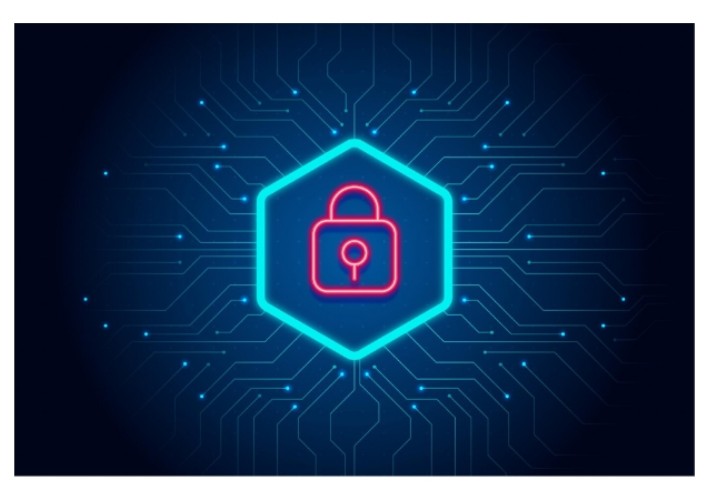The supply chains of today’s interconnected economy are highly digitalized, helping global firms to be precise and swift.
However, this digital transformation comes with a hidden threat: cyber-attacks.
Supply chain attacks are becoming common as hackers seek weaknesses to exploit in organizations and disrupt their operations.
According to a report, in recent years, 93% of organizations have experienced identity theft or breach. This shows how important it is to understand your supply chain to protect it from such threats.
Many companies have large numbers of suppliers, vendors, and third-party partners, leading to weak links that cyber attackers can exploit. So, organizations should strengthen their security to prevent the attacker’s entry into their system.
Keep reading to find out the ways through which you can protect your business and its supply chain.
1. Incorporate Cyber Supply Chain Risk Management
C-SCRM helps various organizations assess and mitigate the threats associated with cyber risks in the supply chain. Since the supply chain is becoming more digital and integrated, the risks of threats or data breaches are rising. This is why cyber supply chain risk management plays a significant role in security.
C-SCRM envisions the supply chain of all the first-tier and second-tier vendors, customers, subcontractors, and third-party service providers. It involves an assessment of the cybersecurity of each of the entities, risks and a method of dealing with them.
For example, C-SCRM can imply a decision to isolate different networks at the chain level to limit partner access. Moreover, it can also implement different strict security measures for companies within the supply chain.
This helps organizations become capable of developing a strategy against cyber risks and creating a competitive edge.
2. Monitoring the Third-Party
To protect your business from cyber threats in the supply chain, you should identify and manage the threats from third parties.
Cyber threats typically emerge from a supplier’s network, so an attack on your supplier equals an attack on your business. To prevent such risks, your company should undertake the following steps when selecting third-party vendors:
- Checking on cybersecurity audits
- Checking on the company’s level of compliance
- Analyzing the security policies of the vendor company
The monitoring of these vendors needs to continue in a consistent manner, too. Use cybersecurity measures that grant visibility into vendor networks and notify the organization of threats.
Hence, by actively managing third-party risks, you can prevent the attackers from using the vulnerabilities in your supply chain.
3. Multi-Factor Authentication (MFA)

One of the major reasons why many cyber attackers are successful is due to weak or inadequate access control. They get to easily crack the credentials, which provide them with permission to access your organization’s system.
In the supply chain, there is a possibility of getting unauthorized access as the suppliers or partners carry confidential data. Therefore, you should apply MFA across all systems to confirm users’ identities through various steps before getting access to sensitive information.
Multi-factor authentication makes it difficult for a hacker to crack correct credentials since the second factor of authentication is required. Furthermore, the Principle of least privilege (PoLP) can also be applied to manage access for both internal and external users.
This means allowing employees to access only those systems or information that is relevant to their job to reduce harm in case of a breach.
4. Evaluate Cybersecurity Practices
Chances of cyber-attacks in your supply chain can be greatly minimized through frequent security audits and penetration tests (pentest).
Security audits entail assessing your security measures, policies, and technologies to determine their adequacy in addressing the threats. It also ensures that your security methods are in compliance with industry standards.
Audits detect the possible risks to your systems and eliminate them before the hackers use them for malicious intentions. Penetration testing is a technique where your network is subjected to an imitation of an attack to check how resistant your security measures are to actual threats. However, some threats may still get through no matter what, and it’s a good idea to click here for options on stock throughput security to protect your assets.
This proactive approach enables the organizations to identify latent threats that could not be identified through a typical audit approach. Monthly audits and biannual penetration testing guarantee that both in-house networks and supply chains are well protected against cyber threats.
5. Equip Your Employees and Suppliers with Cybersecurity Skills

Human error is a significant cybersecurity threat. Your employee might fall for a phishing email, or a supplier using a malware computer could let the attacker in. This is the reason why constant cybersecurity training of employees and suppliers is essential.
Train your employees to identify phishing attempts and ignore risky links and attachments that impose the organization’s cybersecurity protocols. Include your suppliers and partners in this training to help them realize cybersecurity’s significance and responsibilities.
Provide them with standard procedures to follow while dealing with communications and data in a supply chain to avoid mishaps. For example, they should alert the IT or the security team about the incident before trying to solve it by themselves.
Hence, if your organization establishes a culture of cybersecurity, it will effectively minimize the risks originating from human errors.
Conclusion
The risk of cyberattacks on the supply chain continues to rise and is probable to intensify in the future. So, the efforts to safeguard your business operations or supply chain from such threats are crucial.
The ways mentioned, like C-SCRM, monitoring third-party, MFA, evaluating cybersecurity practices, and equipping your employees and supplies with cybersecurity skills, are helpful. By using such ways, your supply chain can be highly secured from attackers and prevent any breach of data.
Supply chain networks are the arteries of any modern organization, while cybersecurity is the shield. Therefore, always protect your supply chain to ensure well-structured organizational development.






